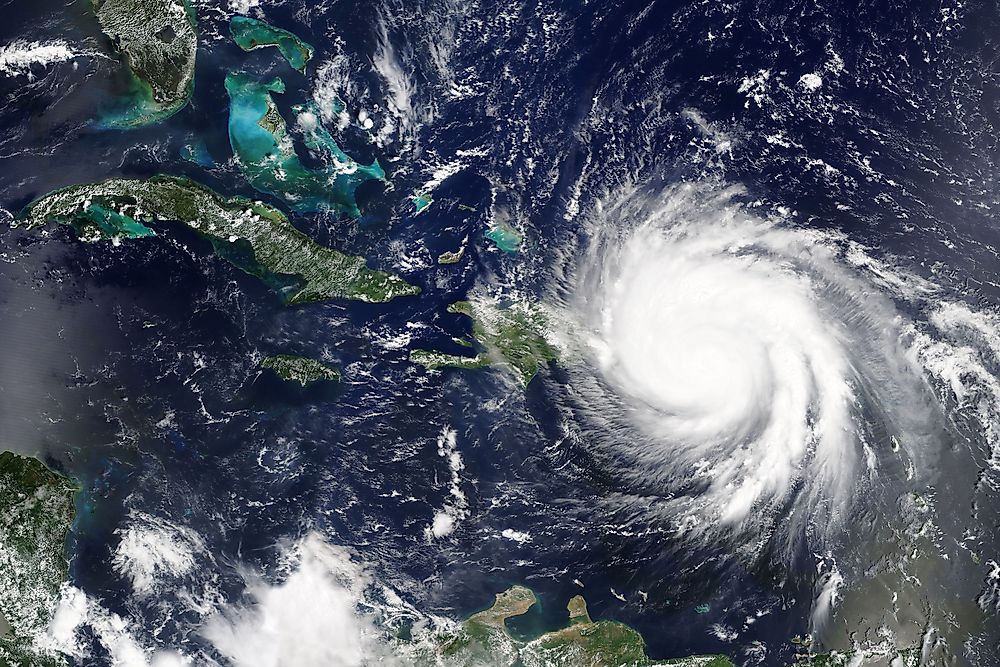What is a Hurricane?

A hurricane is a large, swirling tropical storm that forms in the open ocean and moves towards land at speeds of over 72 miles per hour. Hurricanes form over the Northeast Pacific or the North Atlantic Ocean. They are known as cyclones in the Indian Ocean and South Pacific, and typhoons when they form in the Northwest Pacific.
How Are Hurricanes Formed?
Hurricanes begin forming as tropical disturbances in areas of the ocean that are warmer with temperatures of at least 80 °F. These disturbances are because of low pressure caused by the warm seas. If the ocean temperature continues rising, a storm forms. The speed of the storm may vary, but when it reaches 38 miles, it becomes a tropical depression. The tropical depression gradually develops into a tropical storm and acquires a name when it reaches wind speeds of 39 miles. When the storm sustains wind speeds of 74 miles/h, it is declared a hurricane. Hurricanes produce a staggering amount of energy by absorbing the moist and warm ocean air and releasing it through condensation during thunderstorms. Hurricanes revolve around a calm low-pressure center (eye) that can be 20- to 30-mile wide. The spinning part of the hurricane is known as the “eyewall,” and it is responsible for the strong winds and rain.
Damaging Effects of Hurricanes
When a hurricane reaches land, it causes damages that can be catastrophic and results in a storm surge that can rise to 20 feet and extend for about 100 miles. In fact, storm surges result in 90% of the deaths caused by hurricanes. The winds not only cause massive damage but can also spawn tornadoes. Excessive rainfall cause floods that may occur miles inland. The best way to defend against a hurricane is to get out of its way; most of the hurricanes are forecasted and warnings issued to the communities that may be affected 24 hours prior to the hurricane.
Classification of Hurricanes
The Saffir–Simpson hurricane wind scale is used to classify hurricanes. The scale measures the wind-speeds to determine the intensity of the hurricane. There are five levels of the scale known as categories.
Category 1: Winds 74-95 mph (119-153 km/hr.)
Category 2: Winds 96-110 mph (154-177 km/hr.)
Category 3: Winds 111-129 mph (178-208 km/hr.)
Category 4: Winds 130-156 mph (209-251 km/hr.)
Category 5: Winds more than 157 mph (252 km/hr.)
Naming of Hurricanes
Hurricanes are named because several can occur at the same time. Names make it easier to track and ensure that people are talking about the same thing. A storm is named after it graduates to a tropical storm and the name sticks if it develops into a hurricane. Before the early 1950s, hurricanes were named by the year and the order they occurred within the year. Metrologists realized that shorter names were much easier to remember and reduce confusion when citing a hurricane and the use of female names was adopted in the US. By 1978, the Northern Pacific storms were named using both male and female names.











